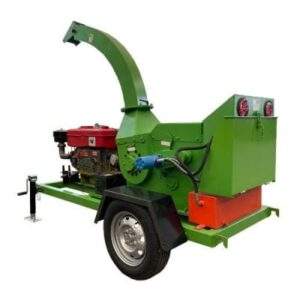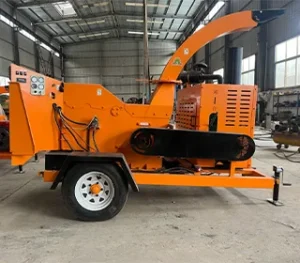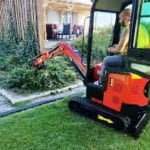Benefits of Investing in a Walk Behind Tractor for Small Farms
Introduction
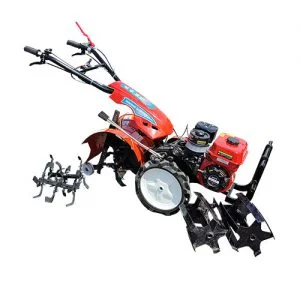
In the realm of small-scale farming, where every decision impacts productivity and profitability, the choice of equipment is crucial. The walk behind tractor emerges as a versatile and efficient tool, offering numerous advantages tailored to the needs of small farms. This blog explores the multifaceted benefits of investing in a walk behind tractor, highlighting its role in enhancing agricultural operations.
What is a Walk Behind Tractor?
A walk behind tractor, also known as a two-wheeled tractor, is a compact yet powerful agricultural machine designed for a variety of farming tasks. It typically consists of a gasoline or diesel engine mounted on two wheels, with attachments such as plows, tillers, seeders, and mowers that can be easily interchanged to suit different farming operations.
Versatility in Farming Operations
The hallmark of a walk behind tractor lies in its versatility. From soil preparation tasks like plowing and harrowing to planting, cultivating, and even harvesting, these machines excel in performing multiple functions. This versatility is especially advantageous for small farms where space and resources may limit the use of larger, more specialized equipment.
Enhanced Efficiency and Time Management
One of the primary reasons farmers opt for walk behind tractors is their ability to significantly enhance operational efficiency. By mechanizing tasks that would otherwise be labor-intensive and time-consuming, such as manual tilling or weeding, these tractors allow farmers to accomplish more in less time. This efficiency not only boosts productivity but also reduces labor costs, making operations more sustainable in the long run.
Cost-Effectiveness Compared to Larger Machinery
Investing in a walk-behind tractor is often more economical for small farms compared to purchasing larger, more expensive equipment. The initial cost outlay is lower, and maintenance costs tend to be more manageable. Furthermore, these tractors consume less fuel than their larger counterparts, contributing to overall cost savings and operational efficiency.
Environmental Benefits and Sustainability
In an era where sustainable farming practices are increasingly prioritized, walk behind tractors offer several environmental benefits. Their compact size and lightweight design minimize soil compaction, preserving soil structure and fertility. Moreover, these tractors typically consume less fuel and emit fewer pollutants than larger machinery, reducing the farm’s carbon footprint.
Ease of Maneuverability and Operator Control
Unlike larger tractors, which can be cumbersome and challenging to maneuver in tight spaces or uneven terrain, walk behind models are highly agile. Their compact size allows them to navigate narrow rows and confined areas with ease, ensuring precise operation and minimal damage to crops. This maneuverability not only enhances operational efficiency but also improves operator comfort and safety.
Maintenance and Durability Considerations
Maintaining a walk-behind tractor is generally straightforward and less costly compared to larger agricultural machinery. These machines are designed for durability, with robust components that withstand the rigors of frequent use in various farming conditions. Routine maintenance tasks such as oil changes, belt adjustments, and inspection of attachments are typically uncomplicated, further reducing downtime.
Comparison of Walk Behind Tractors
| Feature | Walk Behind Tractor | Hand Tools | Larger Tractors |
|---|---|---|---|
| Versatility | High | Limited | High |
| Cost-effectiveness | High | High | Medium to High |
| Maneuverability | Excellent | Good | Limited |
| Fuel Efficiency | High | N/A | Medium to High |
| Maintenance Requirements | Low | Low | Medium to High |
| Environmental Impact | Low | Low | Medium to High |
Training and Accessibility for New Farmers
For new farmers or those transitioning from traditional farming methods to mechanized operations, walk behind tractors offer a user-friendly introduction to agricultural machinery. Training programs are often available through manufacturers or agricultural extension services, covering basic operation, maintenance, and safety protocols. The accessibility and ease of use of these tractors make them an ideal choice for small-scale agricultural ventures.
Case Studies and Real-Life Applications
Examining case studies and real-life applications provides concrete examples of how walk behind tractors have revolutionized farming practices. From small-scale vegetable farms to vineyards and orchards, these tractors have demonstrated their adaptability and effectiveness across diverse agricultural settings. Farmers can draw inspiration and practical insights from successful implementations to optimize their own operations.
Comparison with Other Farming Tools and Equipment
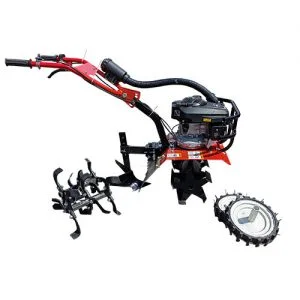
Comparing walk-behind tractors with alternative farming tools and equipment underscores their unique advantages. While hand tools require significant manual labor and larger tractors may be overkill for small farms, walk behind tractors strike a balance between efficiency, affordability, and operational flexibility. This comparative analysis helps farmers make informed decisions based on their specific needs and resources.
Conclusion
In conclusion, the decision to invest in a walk behind tractor is a strategic choice for small farms aiming to enhance productivity, reduce costs, and adopt sustainable farming practices. Its versatility, efficiency, and cost-effectiveness make it a valuable asset in modern agricultural operations, offering practical solutions to meet the evolving challenges of small-scale farming.
FAQ
Q: What types of tasks can a walk behind tractor perform?
A: Walk behind tractors can perform a wide range of tasks including plowing, harrowing, seeding, cultivating, and mowing. They can also be used for transportation and powering other implements like water pumps or electrical generators.
Q: How easy is it to operate a walk behind tractor?
A: Walk behind tractors are designed for ease of operation with intuitive controls. While some initial training may be necessary, most operators find them straightforward to use for basic tasks.
Q: Are walk behind tractors suitable for all types of terrain?
A: Yes, walk behind tractors are versatile and can operate on various terrains including flat land, hills, and even uneven surfaces. Adjustments in tire pressure and proper attachment selection can optimize performance based on terrain conditions.

